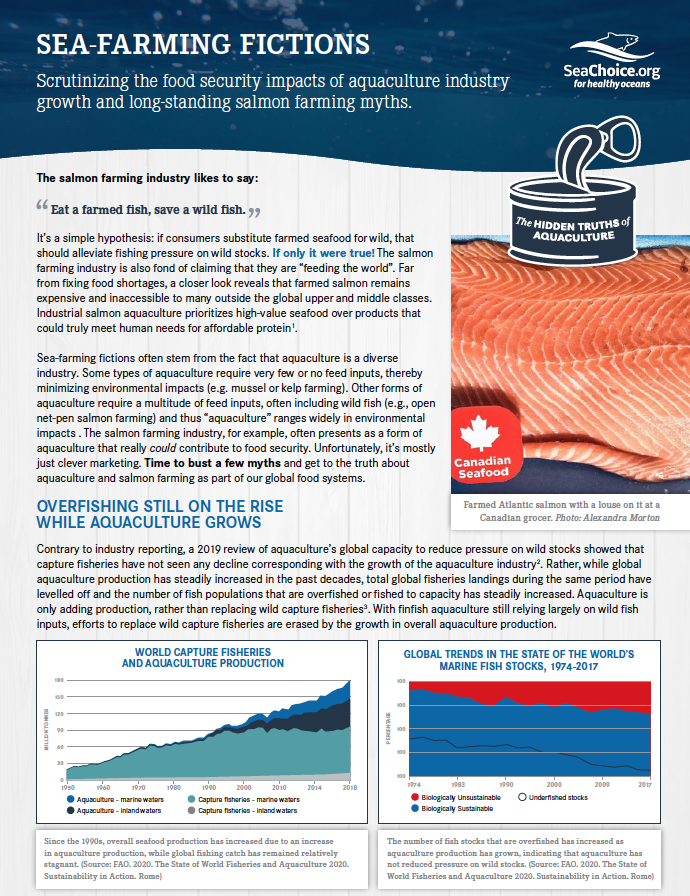Beyond Open Net-Pen Aquaculture
Terminal problems on Canadian salmon farms and where to go from here
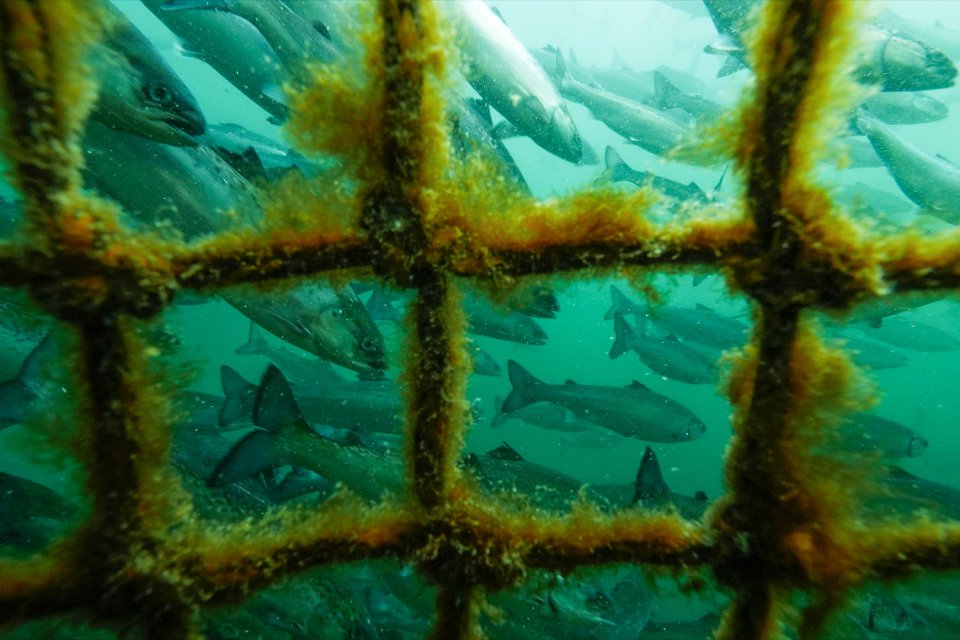
Over the last decade, the steady push to move open net-pen salmon farms out of the water has been growing stronger and stronger. Last year, on the Pacific coast, we secured renewed commitments from the federal government to continue work to transition farms out of key wild salmon migration routes. But there is so much more to do and salmon farming industry pushback remains fierce.
On the West coast, progress has been made towards federal commitments to move net-pens out of the Pacific by 2025, although more work remains. On the East coast, where provincial jurisdiction reigns, the threat of open net-pen expansion is growing throughout Newfoundland and Nova Scotia, despite the significant risk this would pose to heavily depleted wild Atlantic salmon populations.
In the middle of all this, Fisheries and Oceans Canada is drafting the country’s first Aquaculture Act, now hanging in the balance.
With the opportunity for new positive – or negative – legislation facing us, we’ve put together a series of briefings that outline the ecological issues plaguing the salmon farming industry and make the case for transition away from open net-pen aquaculture. These briefings are designed so that anybody interested can engage political representatives on this issue and help us take the next step towards more sustainable aquaculture systems and the protection of wild fish and marine ecosystems. Join us in this effort today by checking out briefings below.
Sea farming fictions
Aquaculture is a diverse sector and its environmental impacts are highly dependent on exactly how and where it is carried out. This briefing addresses several aquaculture myths, including the myth that farmed salmon is helping “feed the world”.
Read the briefing here to learn more about global trends and specific examples in fisheries and aquaculture production that counter the industry narratives around aquaculture and food security.
Farmed salmon eco-certifications don’t stack up
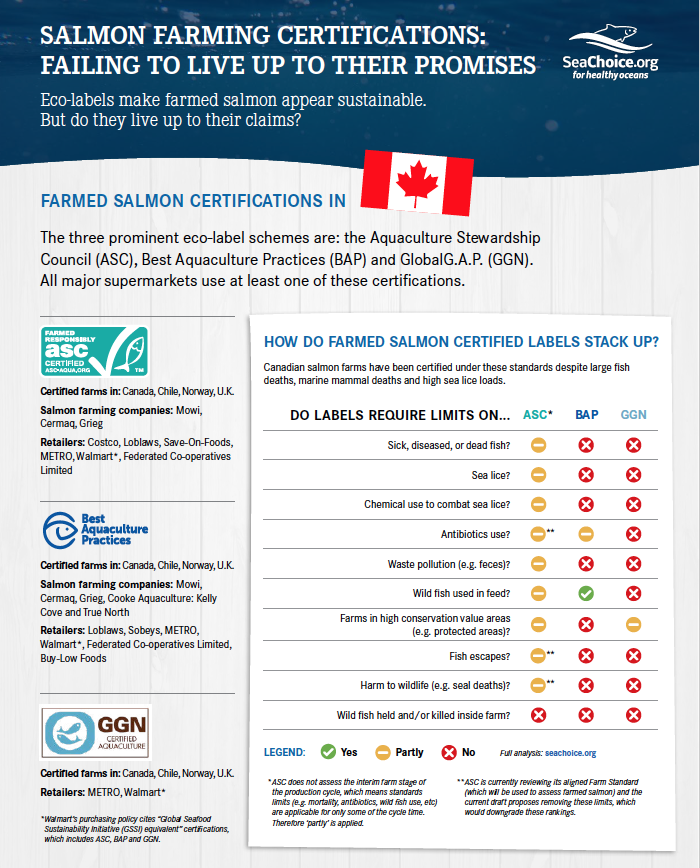 Aquaculture eco-certifications and their associated labels make open net-pen farmed salmon appear sustainable. In actuality, these certifications are failing to protect wild salmon from disease and sea lice due to their loopholes and many “business as usual” criteria for farms.
Aquaculture eco-certifications and their associated labels make open net-pen farmed salmon appear sustainable. In actuality, these certifications are failing to protect wild salmon from disease and sea lice due to their loopholes and many “business as usual” criteria for farms.
Read about how the Aquaculture Stewardship Council, Best Aquaculture Practices and GlobalG.A.P. certifications are failing to live up to their claims here. You can find our full analysis here.
A vision for Canada’s first Aquaculture Act
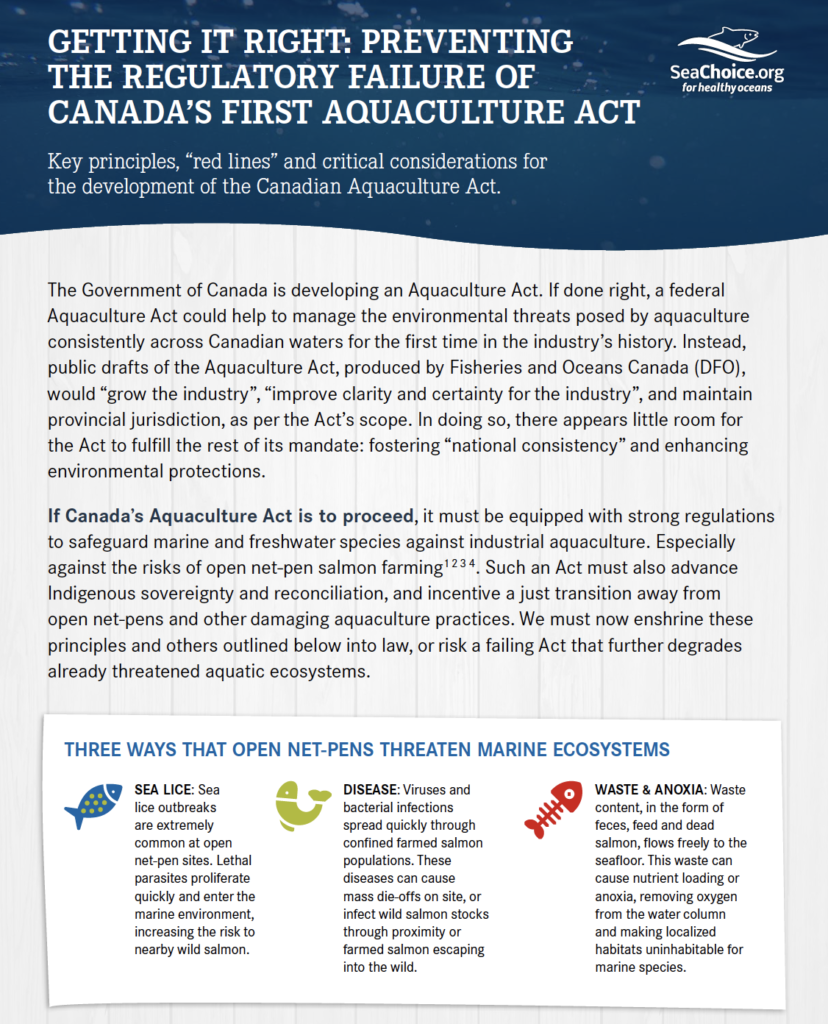
The Government of Canada is developing an Aquaculture Act. If done right, a federal Aquaculture Act could help to manage the environmental threats posed by aquaculture consistently across Canadian waters for the first time in the industry’s history. Instead, public drafts of the Aquaculture Act appear to favour industry interests by reducing regulatory barriers and undermining existing protections under the Fisheries Act. We’ve put together an alternative vision and now we need your help to get legislators to do the right thing. Check out the Aquaculture Act briefing for more information.
Disease in open net-pen aquaculture
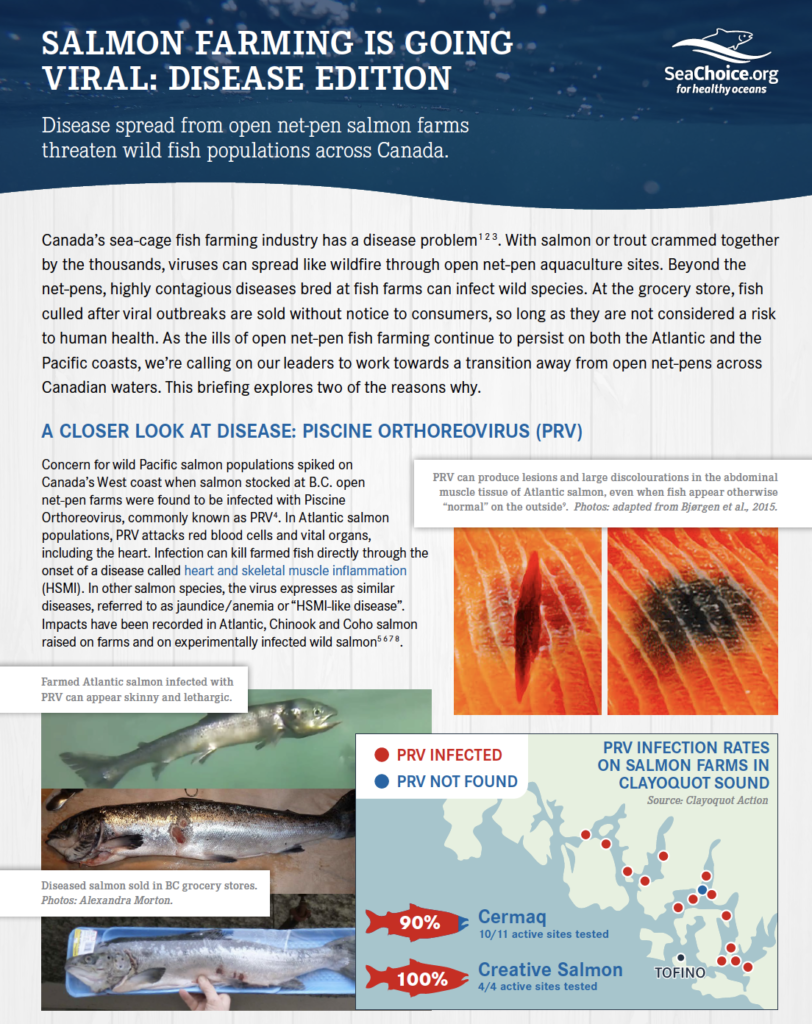
Canada’s sea-cage fish farming industry has a disease problem. With salmon or trout crammed together by the thousands, viruses can spread quickly from open net-pen aquaculture sites to wild fish populations. As open net-pen fish farming continues to threaten marine ecosystems on both the Atlantic and the Pacific coasts, we’re calling on our leaders to work towards a transition away from open net-pens across the country. This briefing explores two of the most lethal diseases in Canadian waters and what they mean for both wild and farmed salmon stocks – read more here.
Sea lice, open-net pen aquaculture and wild salmon
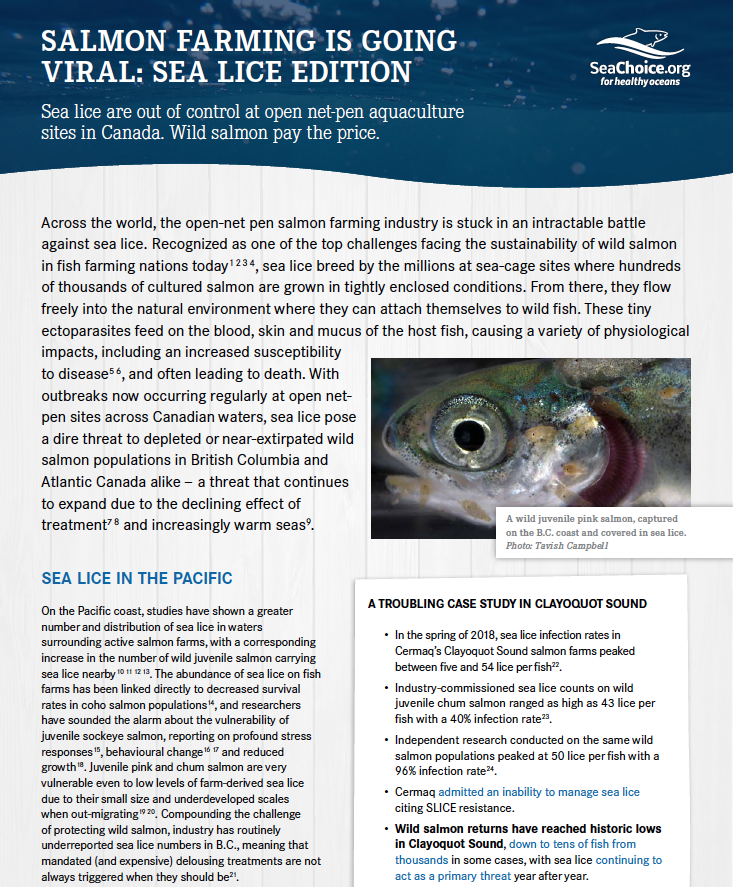
Across the world, the open net-pen salmon farming industry is stuck in an intractable battle against sea lice. Sea lice breed by the millions at sea-cage sites where hundreds of thousands of cultured salmon are grown in tightly packed conditions. From there, sea lice flow freely into the natural environment where they can attach themselves to wild fish. These tiny ectoparasites feed on the blood, skin and mucus of the host fish, causing a variety of physiological impacts and often leading to death. With outbreaks occurring regularly at open net-pen sites across Canadian waters, sea lice pose a dire threat to depleted or near-extirpated wild salmon populations in British Columbia and Atlantic Canada alike. Click here to read more – if you dare.
The case for full transition to land-based systems
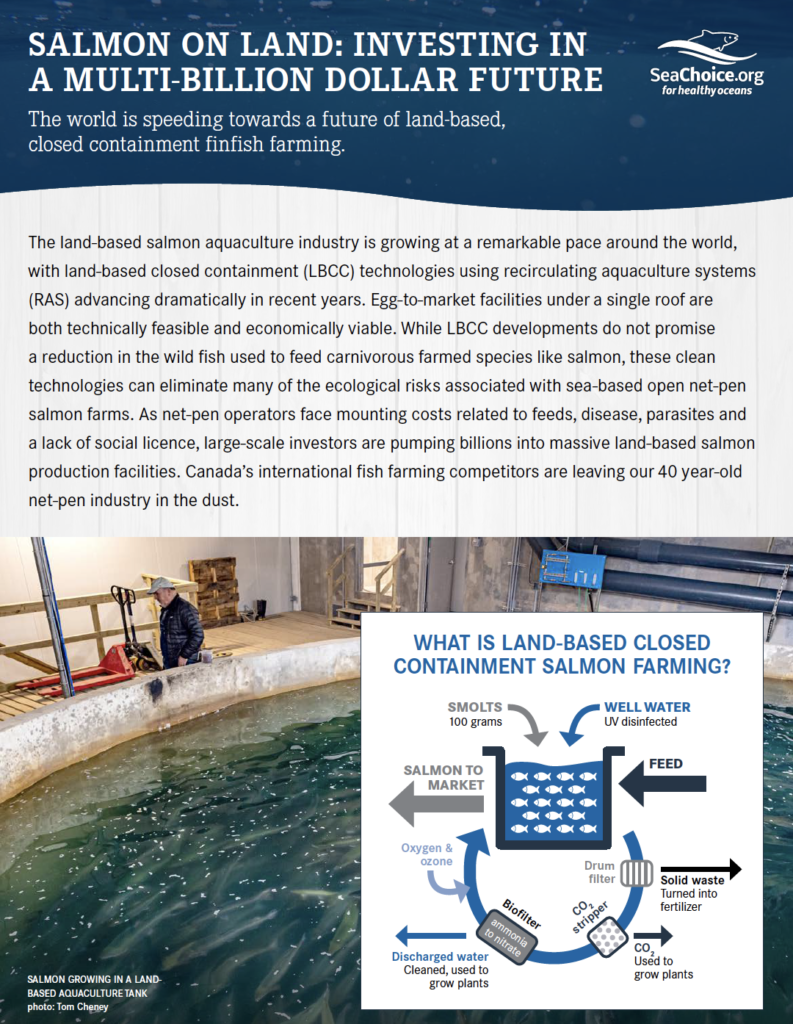
The land-based salmon aquaculture industry is growing at a remarkable pace around the world, with land-based closed containment (LBCC) technologies advancing dramatically in recent years. Egg-to-market facilities under a single roof are both technically feasible and increasingly economically viable. While LBCC developments do not promise a reduction in the wild fish used to feed carnivorous farmed species like salmon, these cleaner technologies can eliminate many of the ecological risks associated with marine open net-pen salmon farms. As net-pen operators face mounting costs related to feeds, disease, parasites and a lack of social licence, large-scale investors are pumping billions into scalable land-based salmon production facilities. Canada’s international fish farming competitors are leaving our 40 year-old net-pen industry in the dust. Find out more about how we can bring this industry into the 21st century here.
Stay tuned for more briefings coming soon on other topical issues related to the Aquaculture Act and open-net pen salmon farming.
